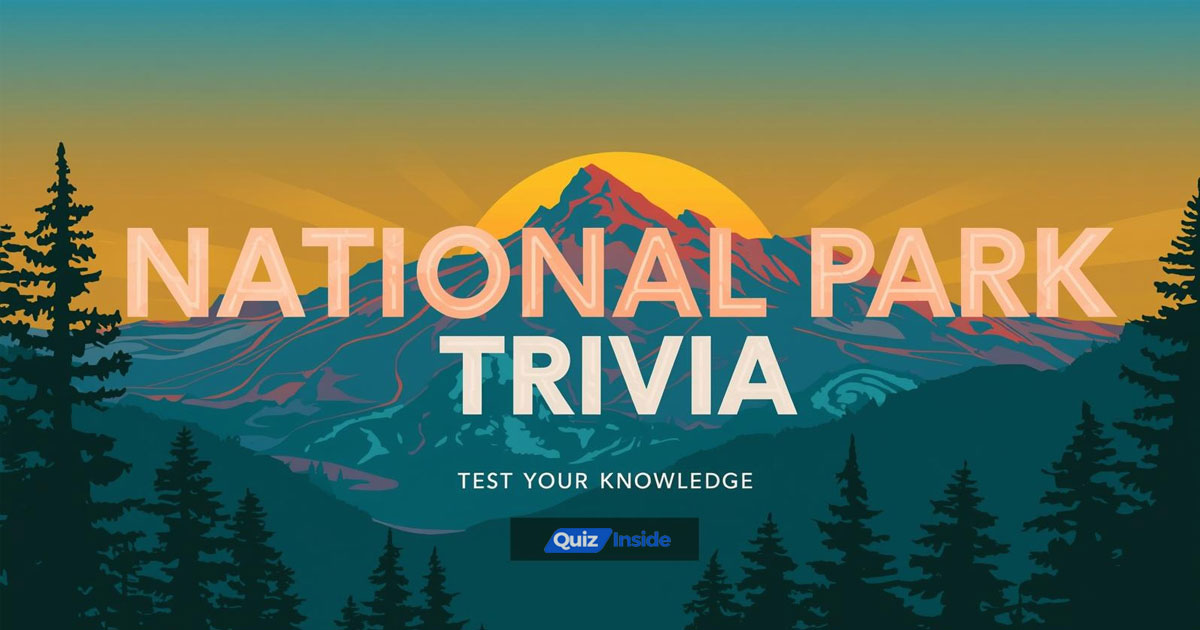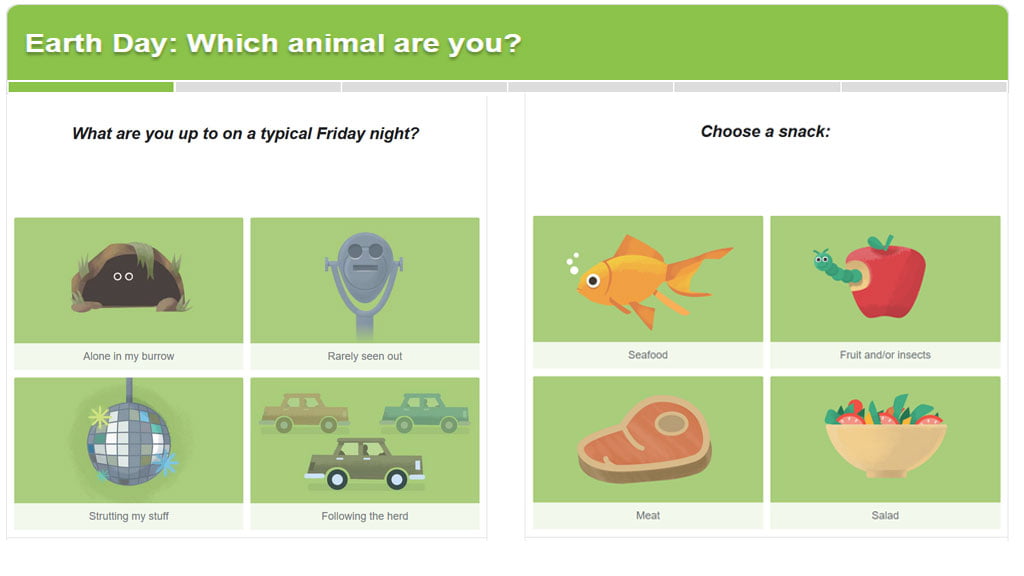National parks are special protected areas of land set aside for everyone to enjoy and to help nature stay beautiful for future generations.
Hey there, fellow park lovers! Imagine this: You’re hiking through towering trees, spotting a deer munching on grass, or watching a rainbow arc over a misty waterfall. That’s the magic of America’s national parks. These spots aren’t just pretty places—they’re packed with stories that blow your mind. In this article, we’re diving into some super cool national park trivia questions. Get ready to test your smarts, share laughs with your family, and maybe even plan your next road trip. We’ll keep it light and fun, like chatting with a buddy around a campfire. No boring lectures here—just wow moments that stick with you.
Why trivia? Because it turns facts into games. Think about it: Instead of reading a dry list, you get to guess, giggle when you’re wrong, and cheer when you nail it. Plus, knowing this stuff makes you the star at school or family dinners. We’ll cover famous parks like Yellowstone and Yosemite, quirky animal tales, and hidden history bits. And hey, if you’re in the USA, these treasures are right in your backyard. Let’s jump in!
Why National Parks Spark Our Curiosity
National parks do more than offer killer views—they’re like giant classrooms without walls. Created to protect wild spots from getting bulldozed, they’ve been around since 1872. That’s when President Ulysses S. Grant signed Yellowstone into law, making it our first. Today, the U.S. boasts 63 of these jewels, from Alaska’s icy fjords to Florida’s swampy everglades. But what hooks us? The surprises. Did you know parks cover over 84 million acres? That’s bigger than some states!
Trivia like this pulls you in because it connects you to something huge. Kids love the “did you know?” zingers that make grown-ups pause. For example, one quick question: How many visitors hit the parks each year? Over 300 million! That’s like everyone in the U.S. crowding in, twice. It shows how these places unite us, from city folks to country campers. And with climate chats everywhere, trivia reminds us why we fight to keep them green.
But let’s not stop at numbers. Parks teach grit too. Early explorers like John Muir hiked miles in boots that’d make your feet cry. He pushed for Yosemite’s protection, calling it “the grandest of all the special temples of Nature.” Stories like his turn trivia into inspiration. So, next time you quiz your pals, you’re not just playing—you’re sharing a piece of adventure history. Smooth transition: Speaking of adventures, let’s zoom into some park stars with trivia that’ll have you saying, “No way!”
101 National Park Trivia Questions and Answers

Explore the beauty, history, and wildlife of America’s greatest treasures — its national parks! From Yellowstone’s geysers to the Grand Canyon’s vast depths, these trivia questions will test your knowledge of the natural wonders that define the United States.
1. U.S. National Park Basics
Description: Let’s start with the essentials! These questions cover general facts and foundational knowledge about America’s national parks.
Q: What was the first national park established in the United States?
A: Yellowstone National Park.
Q: In which year was Yellowstone National Park established?
A: 1872.
Q: How many national parks are there in the United States as of 2025?
A: 63.
Q: Which U.S. government agency manages national parks?
A: The National Park Service (NPS).
Q: What year was the National Park Service created?
A: 1916.
Q: Which president signed the National Park Service Act into law?
A: President Woodrow Wilson.
Q: What is the official motto of the National Park Service?
A: “Experience Your America.”
Q: Which U.S. state has the most national parks?
A: California.
Q: How many national parks are located in Alaska?
A: Eight.
Q: What is the smallest national park in the U.S.?
A: Gateway Arch National Park in Missouri.
2. Famous National Parks
Description: These questions explore the most famous and frequently visited national parks in the U.S., from the Grand Canyon to Yosemite.
Q: Which national park is home to the Grand Canyon?
A: Grand Canyon National Park.
Q: What iconic rock formation is found in Yosemite National Park?
A: El Capitan.
Q: Which national park features Old Faithful geyser?
A: Yellowstone National Park.
Q: Where is Mount Denali, the tallest mountain in North America, located?
A: Denali National Park, Alaska.
Q: Which park is known for its massive sandstone arches?
A: Arches National Park, Utah.
Q: Which national park is famous for the Half Dome rock formation?
A: Yosemite National Park.
Q: Which national park spans both North Carolina and Tennessee?
A: Great Smoky Mountains National Park.
Q: What park features the deepest lake in the U.S.?
A: Crater Lake National Park, Oregon.
Q: Which national park has the largest cave system in the world?
A: Mammoth Cave National Park, Kentucky.
Q: Which park is home to the tallest trees on Earth?
A: Redwood National Park, California.
3. Wildlife and Nature
Description: Discover the incredible animals and ecosystems that make national parks so special.
Q: Which national park is famous for its large bison population?
A: Yellowstone National Park.
Q: What type of bear is native to Glacier National Park?
A: Grizzly bear.
Q: Which bird is a symbol of the U.S. and can often be seen in parks?
A: The bald eagle.
Q: Joshua Tree National Park is named after what type of plant?
A: The Joshua tree (a type of yucca).
Q: Which national park is famous for alligators and mangroves?
A: Everglades National Park, Florida.
Q: What type of animal is commonly found on the cliffs of Zion National Park?
A: Desert bighorn sheep.
Q: Which park is home to Roosevelt elk?
A: Olympic National Park, Washington.
Q: What type of tree is the Sequoia National Park known for?
A: Giant sequoia trees.
Q: Which national park protects coral reefs and marine life?
A: Biscayne National Park, Florida.
Q: What is the most common large mammal in Yellowstone?
A: The American bison.
4. Geography and Landscapes
Description: Test your knowledge of the stunning geography and natural formations within U.S. national parks.
Q: Which national park is home to the world’s largest hot spring?
A: Yellowstone National Park.
Q: What park features the “Mesa Arch” viewpoint?
A: Canyonlands National Park, Utah.
Q: Which park has a valley formed by glaciers in California?
A: Yosemite Valley in Yosemite National Park.
Q: Where can you find the “Delicate Arch”?
A: Arches National Park, Utah.
Q: Which park features sand dunes over 700 feet tall?
A: Great Sand Dunes National Park, Colorado.
Q: Which park is known for its pink-hued hoodoos?
A: Bryce Canyon National Park, Utah.
Q: Which national park has the lowest point in North America?
A: Death Valley National Park.
Q: What is the main river running through Grand Canyon National Park?
A: The Colorado River.
Q: Which park features the world’s largest cave system?
A: Mammoth Cave National Park.
Q: Which park contains Mount Rainier, an active volcano?
A: Mount Rainier National Park, Washington.
5. History and Heritage
Description: Learn about the fascinating history and human stories behind the creation of America’s parks.
Q: Which president established the most national parks?
A: Theodore Roosevelt.
Q: What was the first park created east of the Mississippi River?
A: Acadia National Park, Maine.
Q: What ancient culture left cliff dwellings in Mesa Verde National Park?
A: The Ancestral Puebloans.
Q: What park protects the site of the 1876 Battle of Little Bighorn?
A: Little Bighorn Battlefield National Monument.
Q: Which president signed the Antiquities Act, allowing national monuments to be created?
A: Theodore Roosevelt.
Q: Which national park preserves the site of early Hawaiian royalty?
A: Hawaiʻi Volcanoes National Park.
Q: What is the only U.S. national park that’s also a UNESCO World Heritage Site and International Biosphere Reserve?
A: Everglades National Park.
Q: What historic route passes through several national parks?
A: Route 66.
Q: Which park honors civil rights leader Martin Luther King Jr.?
A: Martin Luther King Jr. National Historical Park.
Q: What park preserves the home of Thomas Jefferson?
A: Monticello and the University of Virginia (World Heritage Site).
6. Desert Parks
Description: These questions explore the hot, dry, and colorful parks of America’s deserts.
Q: Which desert park straddles both California and Nevada?
A: Death Valley National Park.
Q: What park is known for its saguaro cactus?
A: Saguaro National Park, Arizona.
Q: Which park is named after spiky Joshua trees?
A: Joshua Tree National Park.
Q: What park is home to the colorful “Painted Desert”?
A: Petrified Forest National Park, Arizona.
Q: Which park contains Badwater Basin, the lowest point in North America?
A: Death Valley National Park.
Q: Which Utah park features Zion Canyon?
A: Zion National Park.
Q: What park showcases “The Wave,” a striking rock formation?
A: Vermilion Cliffs National Monument (near Grand Canyon).
Q: Which desert park has famous star-gazing opportunities due to dark skies?
A: Joshua Tree National Park.
Q: What park has the Furnace Creek Visitor Center?
A: Death Valley National Park.
Q: Which desert park contains the White Sands of gypsum crystals?
A: White Sands National Park, New Mexico.
7. Mountain Parks
Description: America’s mountain parks are filled with breathtaking peaks and alpine meadows.
Q: Which national park is home to Mount Denali?
A: Denali National Park, Alaska.
Q: What is the highest point in the contiguous U.S. national parks?
A: Mount Whitney (in Sequoia National Park).
Q: Which park features the Continental Divide Trail?
A: Rocky Mountain National Park, Colorado.
Q: Which park features Mount Rainier?
A: Mount Rainier National Park, Washington.
Q: What park includes part of the Sierra Nevada range?
A: Yosemite National Park.
Q: Which park has Glacier Peak and alpine lakes?
A: North Cascades National Park, Washington.
Q: Which park is famous for its alpine tundra?
A: Rocky Mountain National Park.
Q: What park includes the Grand Teton range?
A: Grand Teton National Park, Wyoming.
Q: What mountain range runs through Shenandoah National Park?
A: The Blue Ridge Mountains.
Q: Which mountain park is known for the Going-to-the-Sun Road?
A: Glacier National Park, Montana.
8. Water and Marine Parks
Description: From coral reefs to waterfalls, these parks celebrate the power of water.
Q: Which park features the tallest waterfall in North America?
A: Yosemite National Park.
Q: What park includes coral reefs and mangroves?
A: Biscayne National Park, Florida.
Q: Which park is entirely underwater?
A: Dry Tortugas National Park (mostly underwater).
Q: What lake is the deepest in the United States?
A: Crater Lake.
Q: Which park has the famous “Niagara Falls” of the West?
A: Shoshone Falls (near Snake River Canyon).
Q: What park contains the famous coastal cliffs of Acadia?
A: Acadia National Park, Maine.
Q: Which park features the “Narrows,” a river hike through canyons?
A: Zion National Park.
Q: What is the only tropical coral reef park in the continental U.S.?
A: Biscayne National Park.
Q: Which park protects the world’s largest subtropical wilderness?
A: Everglades National Park.
Q: What park features Brooks Falls, famous for bear fishing?
A: Katmai National Park, Alaska.
9. Hidden Gems
Description: These lesser-known parks are just as stunning but often less crowded.
Q: Where can you find Carlsbad Caverns?
A: New Mexico.
Q: What park protects the Badlands of South Dakota?
A: Badlands National Park.
Q: Which park features the Pinnacles rock spires?
A: Pinnacles National Park, California.
Q: What park showcases ancient volcanoes in northern California?
A: Lassen Volcanic National Park.
Q: Where is Great Basin National Park located?
A: Nevada.
Q: What park has unique rock formations called hoodoos?
A: Bryce Canyon National Park.
Q: Which park contains the Congaree floodplain forest?
A: Congaree National Park, South Carolina.
Q: What park in Texas is known for canyons along the Rio Grande?
A: Big Bend National Park.
Q: What park preserves sand dunes and desert oases in New Mexico?
A: White Sands National Park.
Q: Which park features the rugged Isle Royale in Lake Superior?
A: Isle Royale National Park, Michigan.
10. Fun Facts and Records
Description: End with some amazing facts and records that make national parks truly extraordinary.
Q: Which national park gets the most visitors annually?
A: Great Smoky Mountains National Park.
Q: Which is the least visited national park?
A: Gates of the Arctic National Park, Alaska.
Q: What park is the largest in the U.S.?
A: Wrangell–St. Elias National Park, Alaska.
Q: Which national park is entirely within a city?
A: Gateway Arch National Park, Missouri.
Q: Which park is known for its geothermal features like geysers and mud pots?
A: Yellowstone National Park.
Q: What park was once a leper colony?
A: Kalaupapa National Historical Park, Hawaii.
Q: What park contains the “Needles District”?
A: Canyonlands National Park, Utah.
Q: What national park is nicknamed “The Crown of the Continent”?
A: Glacier National Park.
Q: What park has an active volcano that has been erupting for decades?
A: Hawaiʻi Volcanoes National Park.
Q: What national park was the last to be designated, in 2020?
A: New River Gorge National Park, West Virginia.
Q: Which U.S. president is often called “The Father of the National Parks”?
A: Theodore Roosevelt.
Adventure Awaits: Tips and Tricks for Park Pros
Parks call to explorers young and old. Start easy: Junior Ranger programs badge kids for quests like spotting birds. Question: What’s the most hiked U.S. trail? Zion’s Angels Landing—permit needed, vertigo warning!
Pack smart—water, snacks, bug spray. Leave No Trace: Pack out trash, tread lightly. In rainy Great Smoky Mountains, waterproof boots save tears. Trivia: Smokies host 19,000 species—most diverse park!
For thrills, kayak Apostle Islands’ sea caves or stargaze in dark-sky certified Big Bend. One tip: Visit off-season for quiet bliss. Families, try geo-caching—hidden treasures via GPS. These hacks make trips epic. Wrapping adventures, let’s ponder future—parks evolving amid change.
Facing Forward: Parks in Our Changing World
Challenges loom: Crowds strain trails, warming temps shift wildlife. But hope blooms—solar-powered visitors centers, invasive species fights. Trivia question: Which park leads in carbon offsets? Yosemite, planting trees to balance flights.
Youth groups rally, like Kids to Parks Day. We all pitch in—reduce plastic, vote green. Parks mirror us: Resilient, beautiful, worth saving. This leads us to reflect: What trivia nugget will you share?
Frequently Asked National Park Trivia Questions
Before we wrap, let’s test your takeaways with these Q&As. Pulled straight from our chat—answer ’em solo or shout ’em out!
Q1: What’s the oldest national park in the U.S.?
A: Yellowstone, established in 1872. It’s the granddaddy of them all!
Q2: How deep is the Grand Canyon at its deepest point?
A: About 6,000 feet—deeper than the tallest skyscrapers stacked!
Q3: Name one animal reintroduced to Yellowstone.
A: Gray wolves—they’re back and balancing the ecosystem.
Q4: What’s special about Yosemite’s El Capitan?
A: It’s a 3,000-foot granite cliff, conquered by rope-free climbers.
Q5: How many national parks are there in the U.S.?
A: 63, spanning deserts to tundras.
Q6: Why is Crater Lake so blue?
A: Its purity—no rivers in or out—makes sunlight dance deep.
Q7: What’s the largest tree in Sequoia National Park?
A: General Sherman, a giant sequoia over 275 feet tall.
Q8: How do you get a Junior Ranger badge?
A: Complete activities in a park booklet—super fun quest!
Wrapping Up the Trail: Your Park Adventure Starts Now
Whew, what a hike through trivia town! From Yellowstone’s steamy blasts to the Canyon’s colorful cliffs, these parks pack stories that spark joy and wonder. We’ve quizzed, tabled, and tipped our way to smarter smiles. Remember, trivia isn’t about acing tests—it’s about fueling fires for real visits. Grab your backpack, rally the crew, and chase those horizons. America’s parks wait, whispering secrets only explorers hear. What’s your first stop? Share in the comments—happy trails!



